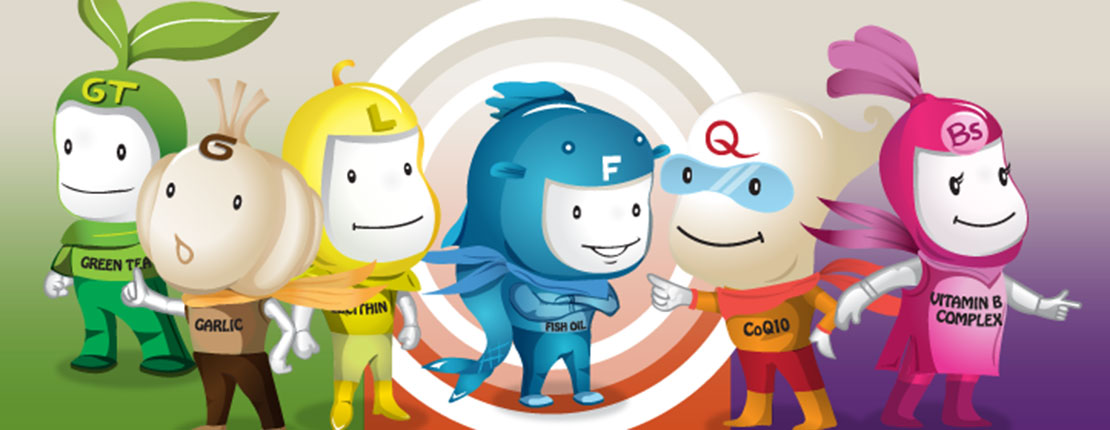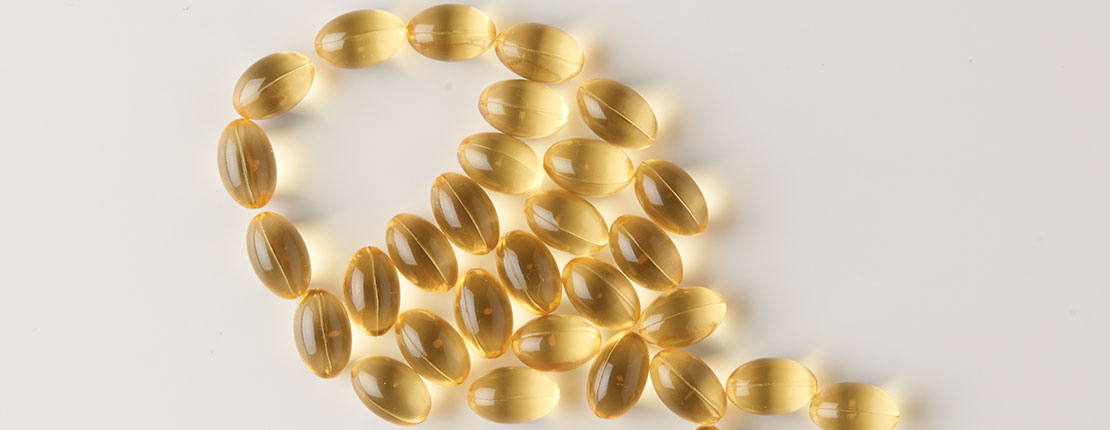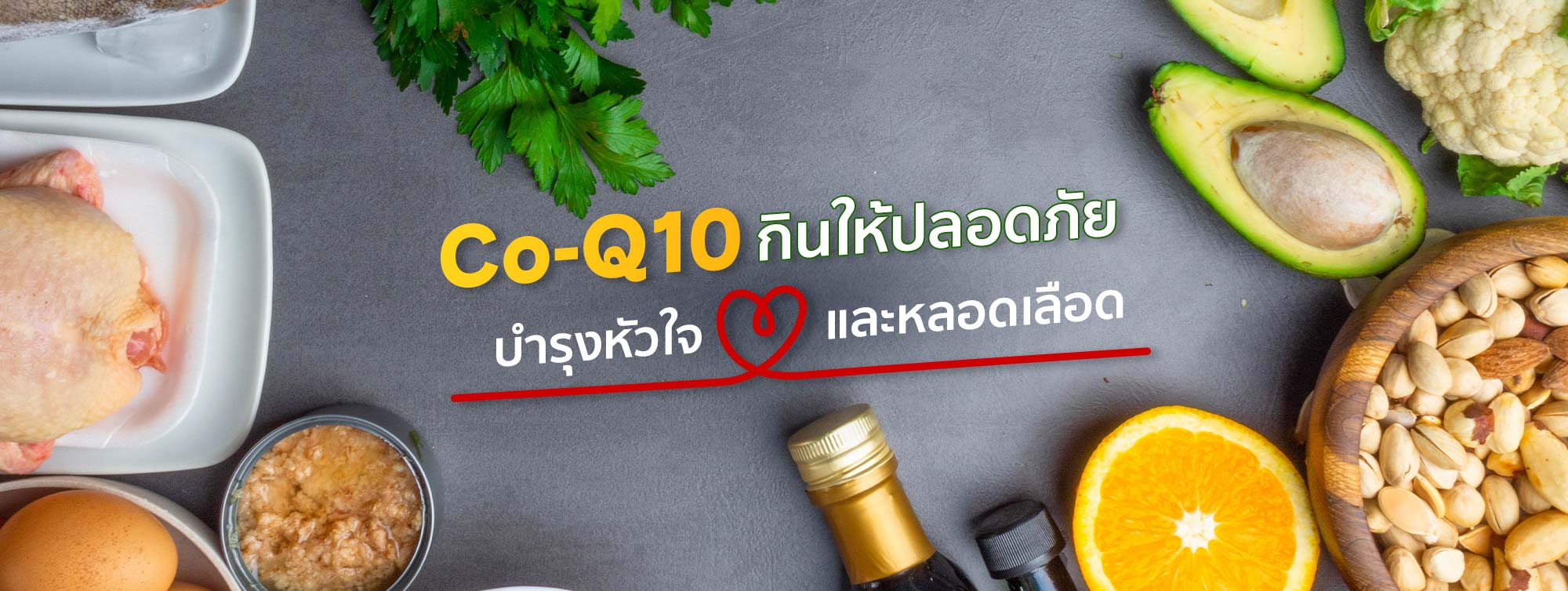โรคหัวใจและหลอดเลือด เกิดจากหลอดเลือดตีบหรือตัน โดยมีการสะสมของตะกรันในหลอดเลือดแดง และมีการอุดตันเกิดขึ้นตามมา ส่งผลให้กล้ามเนื้อขาดเลือดไปเลี้ยง เกิดขึ้นได้ทั้งที่หลอดเลือดหัวใจและหลอดเลือดสมอง ทำให้อันตรายถึงชีวิตได้ การปรับรูปแบบการใช้ชีวิตและเลือกกินอาหารที่ช่วยดูแลและส่งเสริมสุขภาพหัวใจเป็นหนทางที่จะช่วยป้องกันการเกิดโรคหัวใจและหลอดเลือดได้ อาหารที่เปรียบเสมือนฮีโร่ทั้ง 6 ได้แก่ กระเทียม ชาเขียว เลซิติน น้ำมันปลา โคเอนไซม์คิวเท็น และวิตามินบีคอมเพล็กซ์
ระดับไขมันผิดปกติในเลือดเพิ่มความเสี่ยงต่อการเกิดโรคหัวใจและหลอดเลือด
ที่มีความเสี่ยงน้อยต่อการเกิดโรคหลอดเลือดหัวใจ ควรมีระดับไขมันในเลือดดังนี้
- โคเลสเตอรอลรวม น้อยกว่า 200 มก./ดล.
- ไขมัน LDL น้อยกว่า 100 มก./ดล.
- ไขมัน HDL 40 มก./ดล. ขึ้นไป
- ไตรกลีเซอไรด์น้อยกว่า 150 มก./ดล.
สารอาหารสำคัญ 6 ชนิดที่ช่วยป้องกันโรคหัวใจและหลอดเลือด ด้วยการควบคุมตั้งแต่ปัจจัยการเกิดโรคได้แก่ กระเทียม ชาเขียว เลซิติน น้ำมันปลา โคเอนไซม์คิวเท็น และวิตามินบีคอมเพล็กซ์
3 ฮีโร่ ช่วยควบคุมโคเลสเตอรอลสูง
1. กระเทียม (Garlic)
- ช่วยลดโคเลสเตอรอล ป้องกันโรคหัวใจหลอดเลือด
- ยับยั้งการจับตัวของเกล็ดเลือด ซึ่งเป็นสาเหตุของภาวะหลอดเลือดตีบตัน
- ช่วยการคลายตัวของกล้ามเนื้อเรียบในเส้นเลือด ทำให้ความดันโลหิตลดลง
- สารสกัดจากกระเทียมมีส่วนช่วยป้องกันและยับยั้งการเกิดปฏิกิริยาออกซิเดชันของไขมันและโคเลสเตอรอลชนิด LDL
2. ชาเขียว (Green Tea)
สารสำคัญที่พบในชาเขียวคือ อีจีซีจี (EGCG) หรือแคททิชิน (Catechin) ซึ่งมีประโยชน์ในการช่วยลดการดูดซึมโคเลสเตอรอลจากอาหารเข้าสู่เลือด ช่วยให้โคเลสเตอรอลรวม และ LDL ลดลง ป้องกันการตีบตันของหลอดเลือด และช่วยให้ความดันโลหิตลดลง
3. เลซิติน (Lecithin)
- ช่วยลดโคเลสเตอรอล ไม่ทำให้เส้นเลือดตีบ
- ช่วยเพิ่มการดูดซึมวิตามินอี โคเอนไซม์คิวเท็น และเบต้า แคโรทีน เมื่อรับประทานพร้อมกัน โดยเฉพาะวิตามินอีและเบต้า แคโรทีนที่ทำหน้าที่ต้านอนุมูลอิสระ
1 ฮีโร่ ช่วยควบคุมไตรกลีเซอไรด์สูง
น้ำมันปลา (Fish Oil)
ประกอบด้วยกรดไขมันไม่อิ่มตัวสูงชนิดโอเมก้า-3 ถึง 2 ชนิด คือ อีพีเอ (EPA) และดีเอชเอ (DHA)
- ยับยั้งการจับตัวกันของเกล็ดเลือด ทำให้เกิดลิ่มเลือดอุดตันตามผนังหลอดเลือดได้ยากขึ้น
- ช่วยการไหลเวียนของเลือด และลดภาวะอักเสบ ลดโอกาสการเกิดภาวะการตีบตันของหลอดเลือดเฉียบพลันได้
- ช่วยลดโอกาสการเกิดภาวะไตรกลีเซอไรด์สูง
ผลิตภัณฑ์เสริมอาหารที่ประกอบด้วยทั้ง EPA และ DHA ได้รับการรับรองจากคณะกรรมการอาหารและยาสหรัฐอเมริกา โดยรับรองผลของกรดไขมันทั้ง 2 ชนิด ในการลดไตรกลีเซอไรด์ในคนไข้ที่มีภาวะไตรกลีเซอไรด์สูงมาก (มากกว่า 500 มก./ดล.) และภาวะไตรกลีเซอไรด์ระหว่าง 200-500 มก./ดล.
2 ฮีโร่ ช่วยส่งเสริมสุขภาพหัวใจ
1. โคเอนไซม์คิวเท็น (Co Q10)
ช่วยให้การทำงานของกล้ามเนื้อหัวใจมีประสิทธิภาพ โดยเฉพาะช่วงออกกำลังกาย ลดความเสี่ยงต่อโรคหัวใจและหลอดเลือด และยังช่วยลดการอักเสบในกล้ามเนื้อหัวใจได้อีกด้วย
2. วิตามินบีคอมเพล็กซ์ (Vitamin B Complex)
- ช่วยป้องกันความผิดปกติของระบบเมแทบอลิซึม หรือระบบการเผาผลาญพลังงานในร่างกาย
- ช่วยให้หลอดเลือดหัวใจทำงานปกติ และป้องกันโรคหัวใจและหลอดเลือด
- ช่วยเพิ่มไขมันดี HDL ในเลือด
- ลดการอักเสบในหลอดเลือดที่นำไปสู่การป้องกันการตีบตันของหลอดเลือดด้วย
โรคหัวใจและหลอดเลือด ป้องกันได้
ด้วยรูปแบบการดำเนินชีวิตที่เอื้อต่อการมีสุขภาพดี และมีโภชนาการที่สมดุล มีสารอาหารครบถ้วนและปริมาณเหมาะสม โดยพลังงานที่เหมาะสมของคนแต่ละกลุ่มคือ
- กลุ่มเด็กและผู้หญิง (น้ำหนักเฉลี่ย 52 กก.) ผู้สูงอายุ ควรได้พลังงานวันละ 1,600 กิโลแคลอรี
- กลุ่มวัยรุ่นชายและหญิง ผู้ชายวัยทำงาน (น้ำหนักเฉลี่ย 57 กก.) ควรได้พลังงานวันละ 2,000 กิโลแคลอรี
- กลุ่มผู้ใช้แรงงาน เกษตรกร และนักกีฬา ควรได้พลังงานวันละ 2,400 กิโลแคลอรี
การเลือกอาหารและปรับพฤติกรรมเพื่อลดความเสี่ยงการเกิดโรคหัวใจและหลอดเลือด
- ลดอาหารทอด เนื้อสัตว์ติดมัน และอาหารที่มีโคเลสเตอรอลสูง เช่น เครื่องในสัตว์ ไข่แดง อาหารทะเล ยกเว้นปลา
- ใช้น้ำมันที่มีกรดไขมันอิ่มตัวตำแหน่งเดียวให้มากขึ้น
- กินโคเลสเตอรอลจากอาหารไม่ให้เกินวันละ 300 มิลลิกรัม
- ควบคุมน้ำหนักตัวให้อยู่ในเกณฑ์ที่เหมาะสม
- ลดอาหารและเครื่องดื่มที่มีรสหวานจัด
- ไม่ควรกินโซเดียมเกินวันละ 2,400 มิลลิกรัม
- กินปลาทะเลที่มีไขมันสูงเพื่อเพิ่มปริมาณกรดไขมันโอเมก้า-3 ให้แก่ร่างกาย
- เพิ่มผักสดและผลไม้หลากสี
เรียบเรียงข้อมูลโดย ผู้ช่วยศาสตราจารย์ ดร. เรวดี จงสุวัฒน์ ภาควิชาโภชนวิทยา คณะสาธารณสุขศาสตร์ มหาวิทยาลัยมหิดล



_(น้ํา_มัน_ปลา_ช่วย_อะไร)_Thumbnail.jpg)

